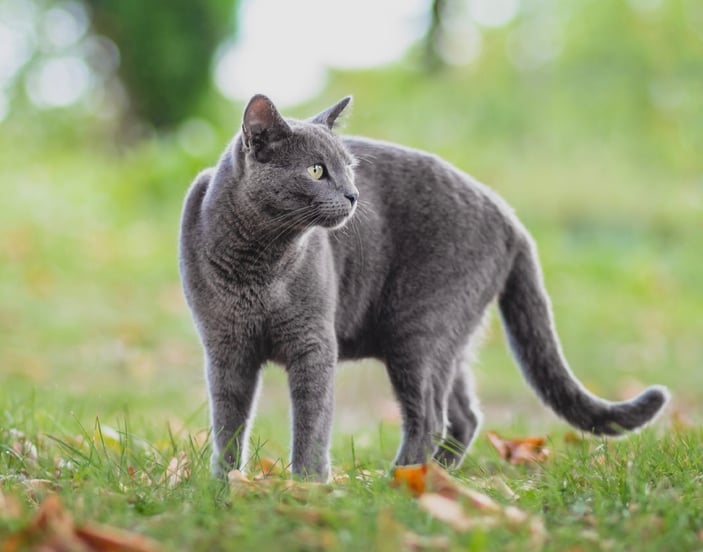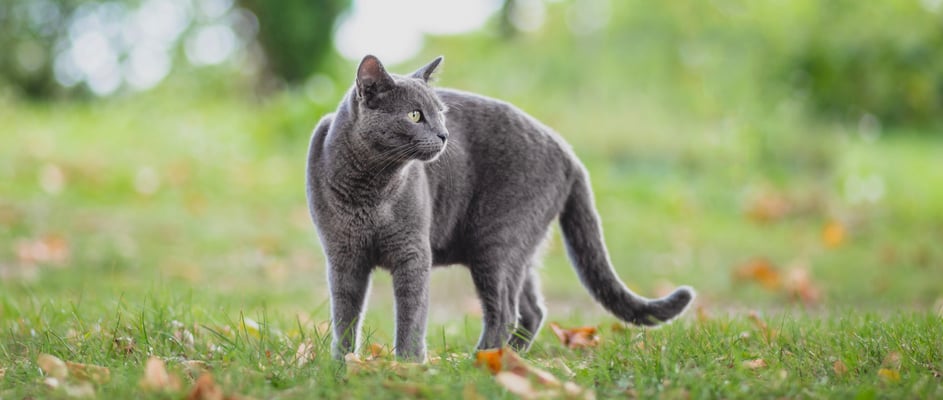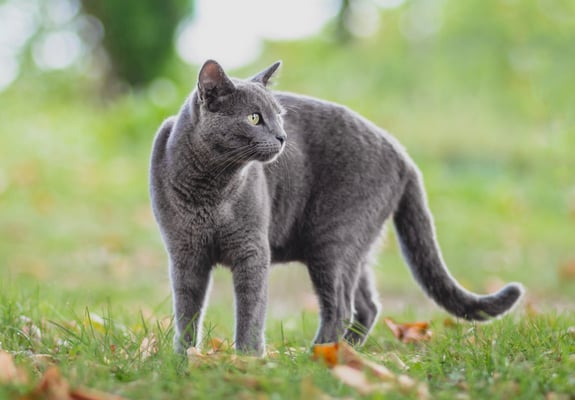The guide to owning a Russian Blue.
Looking to welcome a cat into your home but not sure where to begin? Welcome, you’re in the right place. Secure a no-obligation quote with Waggel to make sure your new friend gets the cover they deserve.
Jump to:
Stats at a glance.
History and origin.
Many believe that Russian Blues trace back to Arkhangelsk, an area sometimes known as the “Archangel Isles.” This gave them the name the "Archangel cat" Local history also says they were cats kept by the Russian Czars and had the same silvery-blue plush coat with a very regal tone.
Over time, these graceful cats travelled from northern Russia to places where cat fanciers began to notice them. By the late 1800s, they even appeared at cat shows like the famed Crystal Palace in Britain.
Because they’re a naturally occurring breed, the first Russian Blue cat lines didn’t arise from heavy crossbreeding. Various enthusiasts helped shape the modern Russian look we see today: a vivid coat, a wedge-shaped face, and incredible emerald green eyes.
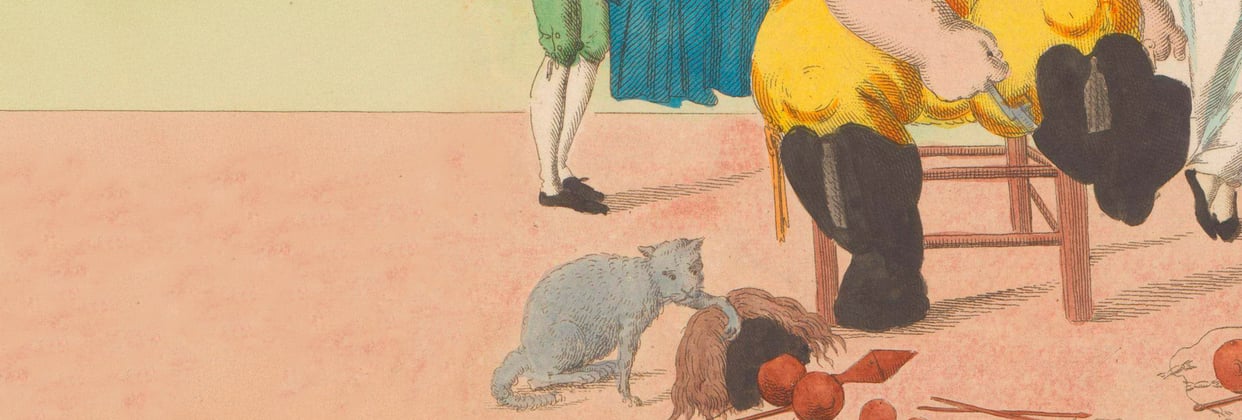

Physical characteristics.
A Russian Blue is typically a medium-sized cat with a lean, athletic build. Their plush coat is short yet dense, giving them a padded, luxurious feel. When sunlight hits their fur, the shimmer can look almost silver. This trait sets them apart from a blue point cat for example, which usually has colourpoint patterns.
Russian Blues also have a distinctive face. Their green eyes are oval and large, often radiating intelligence.
Their triangular ears sit upright, and their whisker pads can appear slightly pronounced, creating the illusion that they’re subtly smiling.
If you prefer a no-fuss grooming routine, Russian Blues often fall under low-maintenance breeds.
Their undercoat might shed lightly, but it usually doesn’t require constant brushing.
For those who want more info about gentle grooming tools, check out our “Furminators for Cats” article.
Colours and patterns.
Though people often assume all Russian cats are the same, Russian Blue is specifically known for its grey-blue hue. Other varieties like the Russian White and Russian Black exist but remain less common.
The true Russian Blue Cat Breed standard focuses on that dense coat with a frosty blue shade. When you meet a purebred Russian Blue, you’ll notice:
A uniform steel-blue tone with an overlay of silver tipping, creating that trademark shimmer.
No stripes other than faint “ghost” tabby lines that can appear on kittens but usually fade with age.
If you stumble upon a mixed Russian Blue or other forms of Russian black, their coats and eye colours can differ. A true purebred Russian Blue will typically have that bold green gaze.
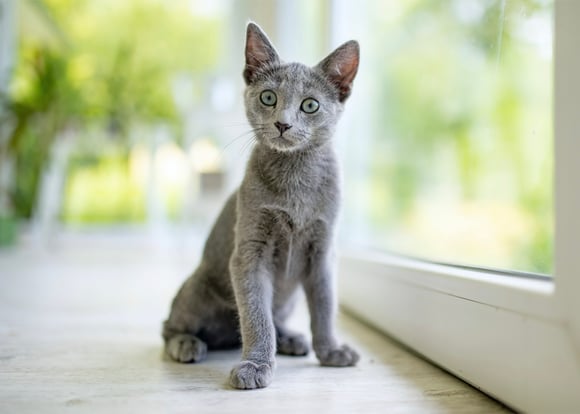
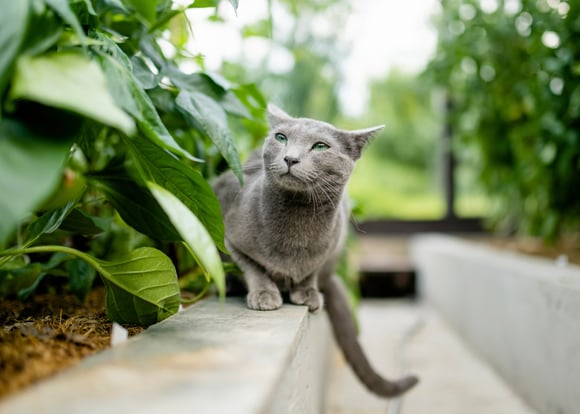
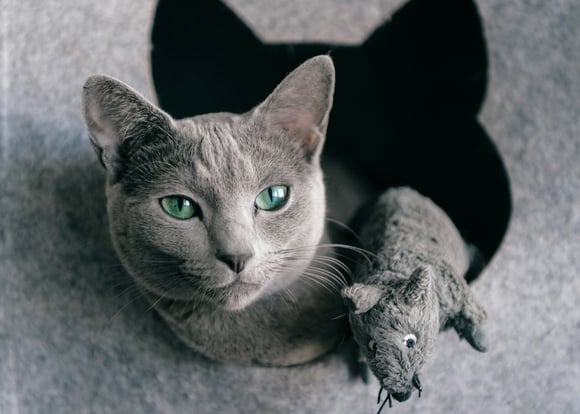
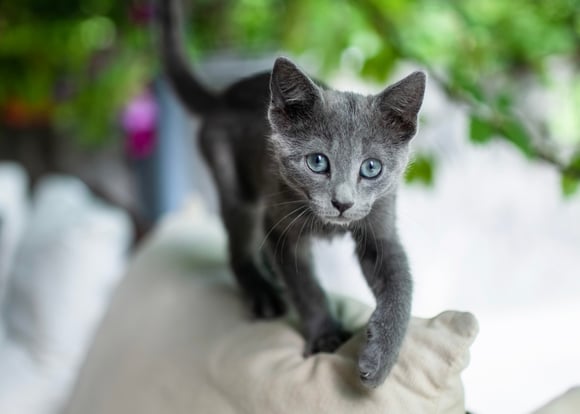
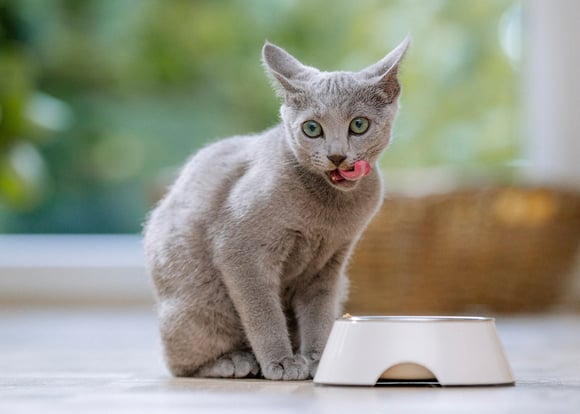
Temperament and personality.
If you value calm companionship, the Russian Blue temperament will likely suit your home. They’re known to be highly intelligent, watchful, and somewhat aloof around strangers. Yet once they trust you, they can be quite affectionate.
Russian Blues often create strong bonds with their chosen human, greeting you with soft meows and gentle nudges.
They may not be as vocal as a Siamese for example, but they’ll let you know if dinner is late! Most Russian Blues appreciate scheduled routines, a tidy home environment, and a sense of consistency.
They’re often called “graceful cats” due to their gentle movements. While they enjoy playtime, they don’t tend to bounce off the walls like some super-energetic breeds.
Instead, they engage in short bursts of energy before curling up somewhere cosy. To keep them mentally sharp, make sure your Russian Blue has short interactive sessions with toys like a mouse on a string.


Health considerations.
Though they’re generally robust, Russian Blues can face a few common issues. Proper vaccination and routine vet check-ups can help maintain overall health. Below is a quick table of some conditions, with average UK treatment costs:
Note: Costs are approximate and can vary based on location and specific veterinary practices.
Keeping them active and at a healthy weight is one of the best ways to avoid problems. Sometimes, your cat might experience sneezing or coughing. If you’re curious about possible causes, we have a handy resource on coughing cats, causes, and treatment.
Also, if you ever see hair loss, explore causes and issues of hair loss and alopecia in cats.
And when it comes to covering unexpected medical bills, Waggel’s Lifetime pet insurance can help manage those costs, as long as your Russian Blue doesn’t have pre-existing conditions.
As of March 2025, the average monthly premium for this breed is around £15, which can offer real peace of mind when you compare it to the potential £500+ cost of treating common health issues.
See our Russian Blue Cat insurance page for more info.
Living with a Russian Blue.
Because Russian Blues like predictability, they integrate smoothly into a calm household. They adapt well to indoor living, making them a smart choice if you’re looking at indoor cat breeds. When you bring a new Russian Blue kitten home, start with a secure area and gradually give them more space. This helps them gain confidence without feeling overwhelmed.
Even though they’re affectionate, Russian Blues enjoy their personal space. They can be selective about cuddles and might slip off to a quiet room when guests arrive.
But once they’ve bonded with you, you’ll find your feline friend following your steps from the living room to kitchen, especially if they suspect feeding time is near!
If you notice them scratching your furniture, try giving them a sturdy cat tree or see our tips on how to get a cat to use a scratching post. This keeps their claws busy in a positive way.


Grooming and care.
Grooming a Russian Blue is straightforward. Their plush coat is short and seldom tangles. A brief brushing session once a week usually does the trick. Occasionally, you’ll notice a bit of shedding, but not as much as other cat breeds. This is why some families refer to them as a hypoallergenic choice, though that’s not entirely accurate (we’ll address allergies further down).
You can keep their nails trimmed and check their ears monthly for any debris. For dental care, browse our ultimate guide to cat dental care to help maintain good oral hygiene.


Diet and exercise.
Feeding your Russian Blue measured amounts of cat food is key, especially since they can be prone to overeating. Their appetite often aligns with their routine. If you feed them at consistent times, their body (and waistline) will thank you.
Most vets recommend balanced, high-quality food with plenty of protein. You can check for specialised formulas at your local pet store or ask about raw or fresh diets. Just ensure you don’t overdo it on treats.
When it comes to exercise, aim for 15–30 minutes of daily playtime with short chases using a feather wand or, as mentioned before, a mouse on a string.
A bored Russian Blue might hide, nap excessively, or meow for attention. Keep them mentally stimulated with puzzle toys or interactive feeders.
If you notice your cat is reluctant to move, consider checking out our insight on cat depression to see if there’s an underlying reason.


Is a Russian Blue cat right for you?
If you crave a mellow, observant companion, and you don’t mind a cat that might duck away when your best friends visit, a Russian Blue can be lovely.
They’re typically polite with visitors but form deeper connections with their immediate family. You’ll enjoy their subtle sense of humour as they peek around corners or tap you with a paw when they want attention.
Russian Blues might not suit someone who wants a cat constantly in their lap. They prefer close presence but aren’t always clingy. If you live alone or have an on-the-go schedule, these cats often handle alone time better than super high-energy breeds.
Just remember, they still benefit from consistent routines and daily attention.
For those seeking a sleek, elegant cat with minimal grooming fuss, strong loyalty, and a quiet temperament, the Russian Blue offers a unique blend of dignity and warmth.
Frequently asked questions.
Are Russian Blue cats hypoallergenic?
People often claim Russian Blues are “hypoallergenic” because they shed less. While it’s true they produce fewer allergens than some cat breeds, no cat is allergen-free. Your best bet is to spend time with a Russian Blue beforehand if you have allergies.
How do I choose a Russian Blue kitten?
Look for a reputable breeder or consider adopting from a shelter. A purebred Russian Blue should have that trademark grey-blue fur and green eyes (though kittens’ eyes might turn green later).
Check vaccination records and overall health. Ask about the parents’ temperaments, which can give you clues about your future cat’s personality.
Are Russian Blues good family pets?
Yes! They’re typically gentle, affectionate, and patient. They mesh well in quieter households with older kids who understand the need for gentle handling. Younger children should be supervised to ensure respectful interactions.
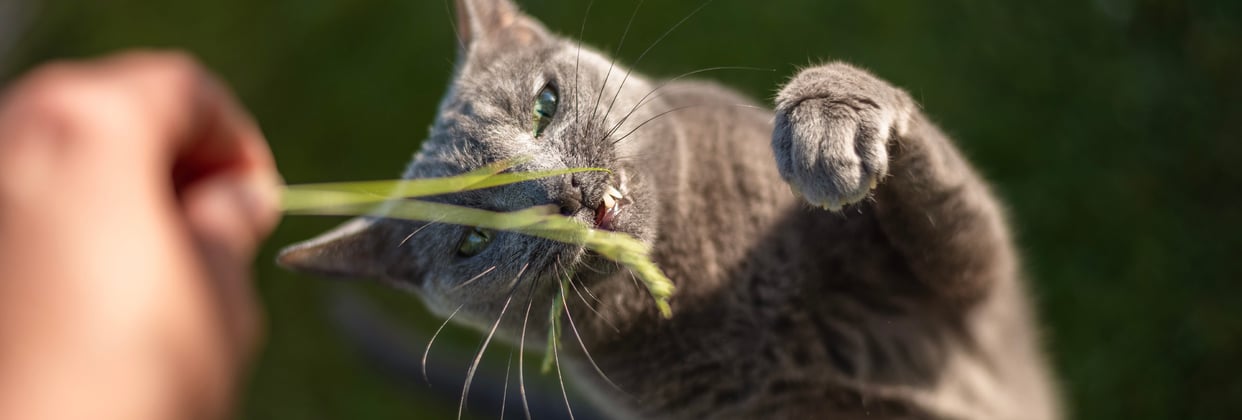

What is the price of a Russian Blue cat?
A Russian Blue Cat can range from a few hundred to over a thousand pounds. This depends on pedigree, show quality, and breeder reputation. Always verify references. If that seems high, consider a rescue; occasionally, you can find Russian cats in need of a good home.
Do Russian Blues get along with dogs?
Russian Blues can co-exist with polite, calm dogs. Introduce them slowly and let your cat set the pace. Because these felines appreciate tranquillity, a boisterous pup might stress them unless carefully socialised.
Do Russian Blues need outdoor access?
They don’t require it. Many Russian Blues live happily indoors with toys, scratching posts, and climbing towers. If you want to give them a safe taste of the outdoors, you might use a secure “catio” or supervise them with a harness.
Pet insurance for Russian Blues.
With their quiet charm and striking silver-blue coats, Russian Blues deserve thoughtful, attentive care. Pet insurance from Waggel gives you peace of mind when the unexpected happens , from sudden vet visits to ongoing health conditions. Get a quote today and give your Russian Blue the protection they need to stay happy, healthy, and serene.
